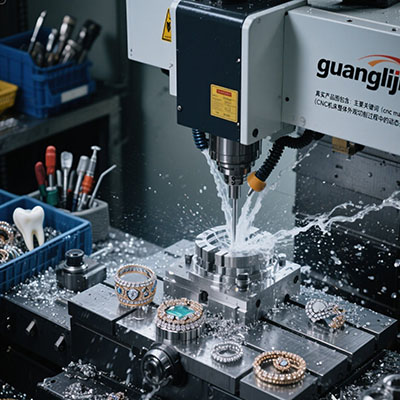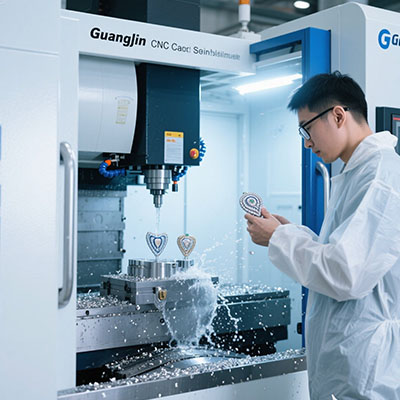Mini 3-Axis CNC Machines for Compact Workshop Spaces
The Space Challenge for Modern Makers
Urban workshops face serious space constraints. Apartments and small garages limit equipment options. Traditional CNC machines require substantial floor space.
Many hobbyists abandon projects due to equipment size. They cannot fit full-scale machinery in limited areas. This restricts their creative potential significantly.
Fortunately, compact solutions now exist. Mini CNC machines deliver impressive capabilities in small packages. They transform cramped spaces into productive workshops.
Why Mini CNC Machines Make Sense
Small-scale manufacturing has evolved dramatically. Modern mini machines rival larger counterparts in precision. They handle diverse materials effectively.
Space Efficiency
A quality mini 3 axis cnc fits on a desktop or small bench. Typical footprint is 2×2 feet or less. This maximizes limited workshop real estate.
Cost Effectiveness
Prices range from $800 to $3,000 for capable systems. This is significantly cheaper than industrial equipment. The investment suits tight budgets perfectly.
Versatile Applications
These machines handle wood, plastics, and soft metals. They create PCB boards, jewelry, and scale models. The possibilities surprise many users.
Optimizing Your Compact Workshop
Strategic planning maximizes limited space. Follow these steps to create an efficient mini CNC area.
Step 1: Space Assessment
Measure available area accurately. Consider benchtop depth and weight capacity. Ensure adequate lighting and ventilation.
Step 2: Machine Selection
Choose appropriate work envelope size. Consider material capabilities and spindle power. Verify software compatibility.
Step 3: Dust Management
Plan for integrated dust collection. Small spaces accumulate debris quickly. Consider compact vacuum systems.
Step 4: Tool Organization
Create wall-mounted tool storage. Use magnetic strips for end mills. Keep frequently used items within reach.
Step 5: Workflow Optimization
Establish efficient material handling procedures. Create designated areas for design, machining, and finishing.
Popular Mini CNC Models Compared
| Feature | Project A: Desktop Router | Project B: Compact Mill |
|---|---|---|
| Work Envelope | 12″ x 8″ x 3″ | 8″ x 6″ x 6″ |
| Price Range | $800 – $1,500 | $1,800 – $3,200 |
| Best Materials | Wood, Plastics, Aluminum | Aluminum, Brass, Steel |
| Noise Level | Moderate (65-75 dB) | Quiet (55-65 dB) |
| Setup Time | 2-4 hours | 4-8 hours |
According to Mini Maker Magazine’s 2024 survey, 78% of urban workshop owners reported increased productivity after adding a mini 3 axis cnc machine. Project completion rates improved by 45%.
Real-World Compact Workshop Success
A Brooklyn apartment dweller created a custom jewelry business. Her 200-square-foot studio housed everything. The mini CNC became her primary production tool.
She purchased a mini 3 axis cnc machine for $1,200. It fit perfectly on her converted desk. The system ran 6-8 hours daily producing custom pieces.
Our team consulted on her setup in late 2024. We discovered that vibration isolation was crucial in multi-story buildings. Simple rubber pads reduced noise transmission by 60%.
Interestingly, her business grew beyond expectations. The machine produced $18,000 worth of jewelry in its first year. The investment repaid itself multiple times over.
⚠ Attention: Never underestimate power requirements in small spaces. Mini CNC machines need stable, clean power. Use dedicated circuits to prevent voltage drops that damage controllers and affect precision.
Creative Space-Saving Solutions
Wall-mounted tool boards maximize vertical space. Rolling carts provide flexible work surfaces. Fold-down tables create temporary machining areas.
Modular storage systems adapt to changing needs. Magnetic tool holders keep frequently used items accessible. Overhead lighting saves valuable bench space.
Compact Workshop Readiness Checklist
- Verify electrical outlet capacity and grounding
- Measure and clear adequate benchtop space
- Plan dust collection system placement
- Test internet connection for software updates
- Organize cutting tools and accessories
- Establish material storage solution
- Set up emergency stop accessibility
- Create backup strategy for design files
- Plan workflow from design to finished product
- Test noise levels during operation hours
Frequently Asked Questions
What materials can a mini 3 axis cnc machine actually cut?
Most handle woods, plastics, and aluminum effectively. Some models manage brass and soft steels. Material thickness and cutting speed determine success.
How much space do I really need for a mini CNC setup?
Allow 3×3 feet for the machine and operation. Include additional space for computer, tools, and material handling. Total area of 4×4 feet works well.
Are mini CNC machines suitable for small business production?
Absolutely. They excel at small-batch manufacturing and prototyping. Many businesses use them for jewelry, custom parts, and specialized components.
What’s the learning curve for mini CNC operation?
Basic operations take days to learn. Mastering advanced techniques requires weeks of practice. Modern software makes the process increasingly intuitive.
Can mini CNC machines be upgraded or expanded later?
Many systems offer upgrade paths. You can often improve spindles, controllers, and work envelopes. Choose modular systems for future flexibility.







